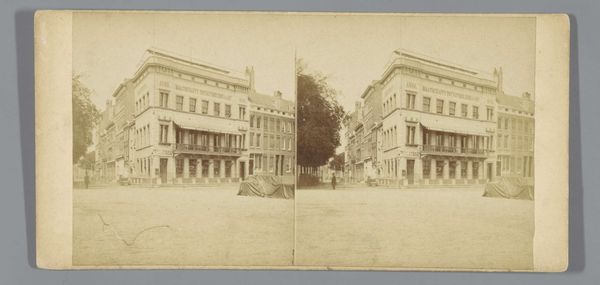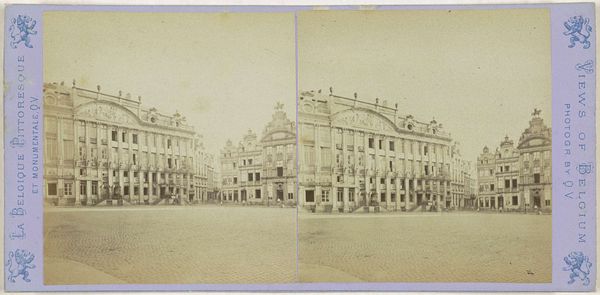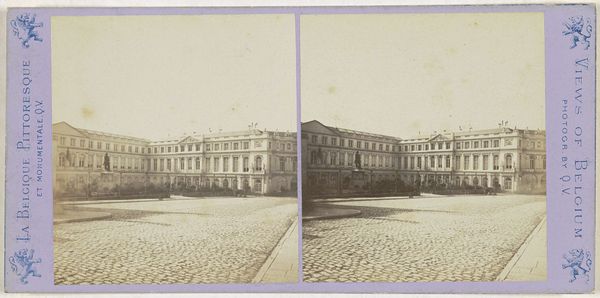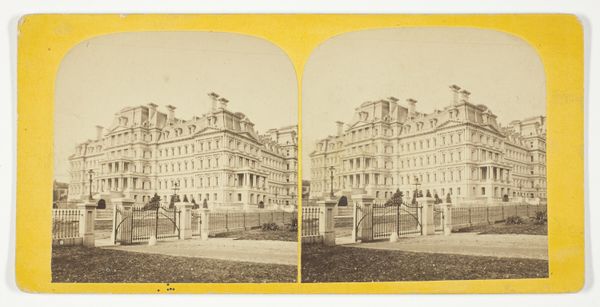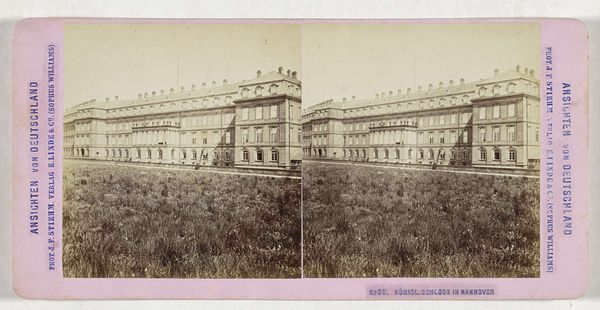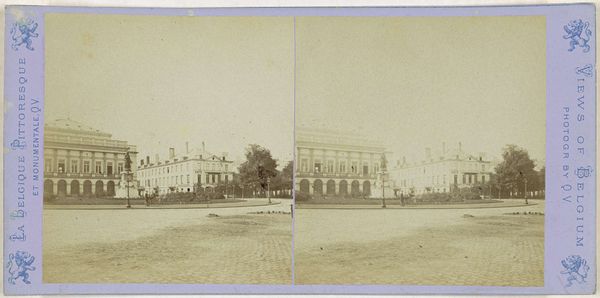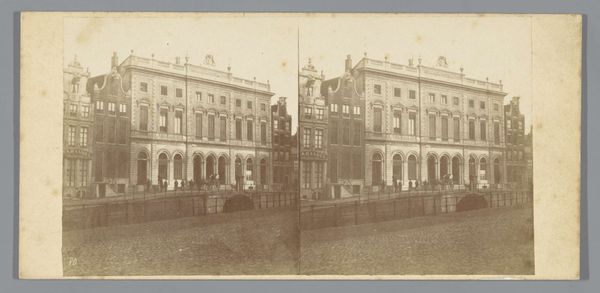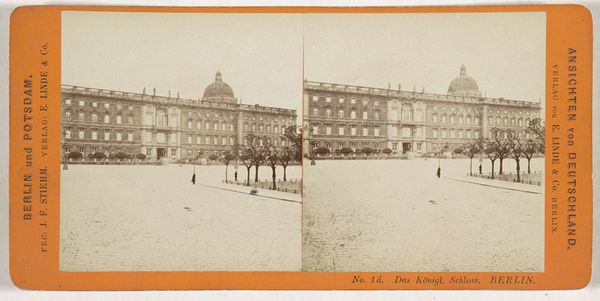
Dimensions: height 85 mm, width 170 mm
Copyright: Rijks Museum: Open Domain
This stereoscopic image of the Beau-Rivage Palace in Lausanne was made by E. Savioz, using photographic techniques that were very popular in the late 19th century. The appeal of this card came from its material capacity to capture depth when viewed through a stereoscope. The photographic process itself – involving light-sensitive chemicals, glass plates, and printing methods – was at the cutting edge of technology. The labour was intensive; from setting up the shot, to developing the image in a darkroom, to the final printing. The resulting sepia tones lend a sense of nostalgia, evoking a time when leisure and travel were becoming more accessible, yet still retained an air of exclusivity. The very act of creating and consuming stereoscopic images was tied to larger social and economic forces. It speaks to the rise of a consumer culture, where even experiences could be packaged and sold as commodities. Appreciating this image means recognizing the layers of material, skill, and social context embedded within it.
Comments
No comments
Be the first to comment and join the conversation on the ultimate creative platform.
